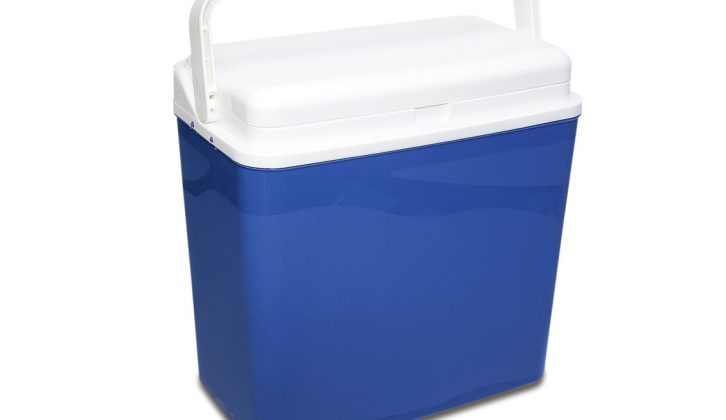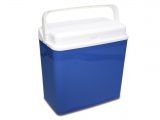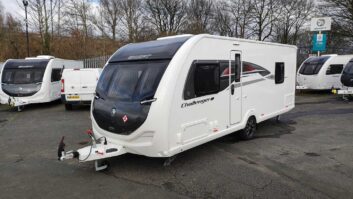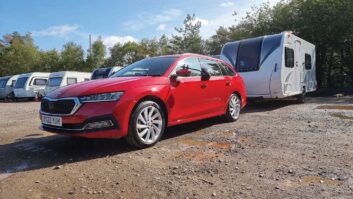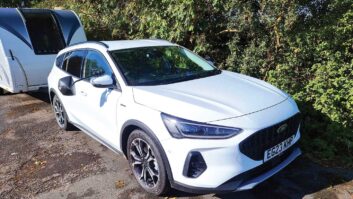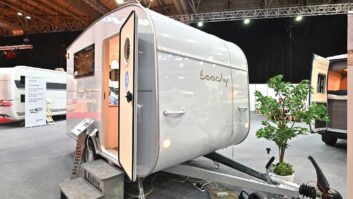Verdict
At the end of the Practical Caravan passive coolbox review, we felt we could only give the Argos coolbox one out of five. That is not to say that it’s useless or unusable, it isn’t, but of all the passive coolboxes tested, it was bottom of the pile. However it is well made, has a useful, 24-litre capacity and can accommodate two-litre bottles.
Pros
Two-litre bottles can stand upright in it
Cons
Poor thermal efficiency
Passive coolboxes are regaining popularity as essential caravan accessories – but why? After all, powered coolboxes have never been more affordable or available. However, if you’re going out and about and unplugging them, most of them warm up inside very quickly. In addition, powered coolboxes often don’t deliver the 15-20˚C of chilling below ambient temperature they claim, especially in Continental climates.
At the same time, passive coolbox technology has come on in leaps and bounds. Advances in ice pack technology, plastic moulding and insulation – especially in the US and in Australia – have led to the development of super coolboxes. These aren’t cheap options, but they will keep your food and drink chilled for days or maybe even weeks without you needing to add additional ice packs. And for canny caravanners, these are excellent for days out as they’re not reliant on hook-ups or battery power – and as they don’t have ventilation grilles, you can store them wherever you have space, although not in direct sunlight.
Here at Practical Caravan, we conducted a passive coolbox group test to discover which products are worth considering when you’re packing for your next caravan holidays. The Igloo Island Breeze rolling cooler scored three out of five, another Igloo product, the Sportsman, scored four out of five, while the Techniice Signature received a four-star rating. Another four-star product was the colourful Icey-Tek Cube Box, but none could beat our group test winner, the Waeco Cool-Ice, which scored a super five out of five. So how did we test the products to discover which was the best coolbox?
First, we wanted to test the thermal abilities of each product. We therefore opened them all and left them open until they reached an ambient temperature of 25˚C. We then filled them all with ice chilled to -12˚C (each coolbox received ice totalling 5% of its capacity), shut them and left them in a room kept at 27˚C for eight hours, frequently checking their internal temperatures during this period.
Other factors were taken into account, too. These included general build quality, price, ease of carrying and portability, and whether the coolboxes were deep enough to store tall bottles upright.
We also looked for other desirable attributes. These included drainage bungs (these let you remove ice melt without raising the coolbox’s internal temperature), good sized feet (which lift the coolbox off the warm ground) and padlocks (keeping alcohol away from kids). And as coolboxes can also have to serve as emergency seating, a sturdy box is no bad thing.
In the Practical Caravan Argos coolbox review, this 24-litre product only scored one out of five. Its thermal efficiency is way lower than that of every other coolbox tested. That’s not to say it’s absolutely dire, but with a minimum temperature of 19.4˚C and a test average of 19.9˚C, it is a giant step down from others. In truth, if you load it with several ice packs, it will be fine for an afternoon out. It’s not badly made and it can hold two-litre bottles upright. The price, though, is the problem. A fair price might be £15, given its performance; this is no bargain.
If you load it with several ice packs, it will be fine for an afternoon out
Technical Specifications
| Size | H40, W23, D38cm |
